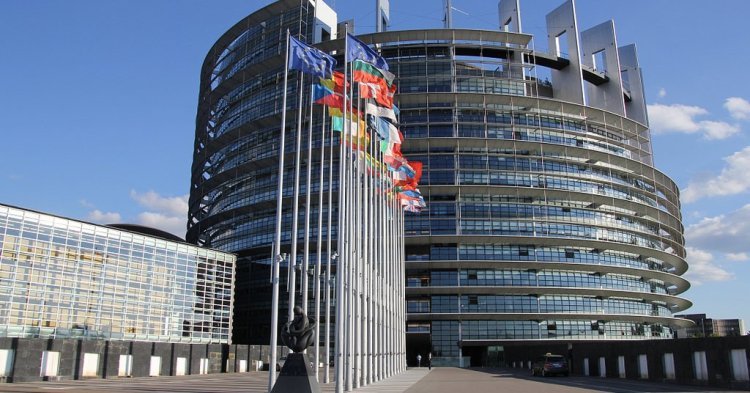Euroscepticism as the new normal?
In many respects, 2017 confirmed the advent of a golden age for Eurosceptic movements across the continent. Although less successful than widely expected, the German Alternative für Deutschland, the Austrian Freiheitliche Partei Österreichs, the French Front National or the Dutch Partij voor de Vrijheid received remarkable popular support in recent elections and gained ground in their respective parliament. More decisively, their control over the agenda has substantially increased through heightened Eurosceptic rhetorics in media outlets, as plenty of examples throughout Europe–such as the British, the Swiss, the Czech or the Polish cases have shown. Eurosceptics seem to be everywhere.
This feeling of pervasiveness is however deceptive. For there is not such a thing as one monolithic, internally consistent ideology that could be subsumed under the wording Euroscepticism. Rather, it has become a catch-all category merrily used by some journalists and politicians keen on turning complex, multidimensional political conflicts into Manichean narratives. A cursory observation of so-called Eurosceptic discourses reveals on the contrary their diversity and even at times their incompatibility; if anything, one should speak of Euroscepticisms. Highlighting this plurality is not only of conceptual relevance, but has a political dimension: the new Eurosceptic consensus may simply not exist.
Exploring various Euroscepticisms
Put simply, Euroscepticism as a term is a conceptual mess. The scholarly literature as well as recent political developments in Europe highlight a dimension too often overlooked: What is the object of scepticism? In other words, what does the Euro of Euroscepticism stand for? Decisively, a distinction can be made between the opposition to the European idea (Europe as a geographical and political reality at the level of which common action can be undertaken) and to the European Union (the current political object as it stands). Based on this distinction, four major strands can be identified.
| Opposed to the European idea | Non-opposed to the European idea | |
|---|---|---|
| Opposed to the EU | Radical Euroscepticism | Revisionist Euroscepticism (withdrawalist / transformationalist) |
| Non-opposed to the EU | Pragmatic Euroscepticism | Federalist Euroscepticism |
The first strand that often comes to mind is radical Euroscepticism. It consists of a fundamental opposition to the European Union and any elaborate form of a European idea. Although hard Euroscepticism certainly exists within the population, its visibility in the media is marginal since most Eurosceptic groups usually advocate for a different Europe. What is indeed more common is a form of revisionist Euroscepticism, drawing together those opposed to the EU but who back a different embodiment of the European idea.
For instance, the hostility prevailing in the UK is arguably directed towards the political and supranational components of the EU, rather than the Single Market to which it is now desperately seeking access. These “alternative Europes” can vary considerably (wider European economic space, Europe of Regions, Europe of Nations, United States of Europe…) and the degree of Euroscepticism they demonstrate depends both on their goodness of fit with the current EU as well as their readiness to compromise in order to adopt reforms. In turn, these factors allow to distinguish those ready to withdraw from a EU seen as too distant from their preferred model (the withdrawalist) from those determined to stay inside the structure in order to transform it (the transformationalist). Revisionist Euroscepticism challenges constitutional matters, such as the role of the states in the Union or the finality of the integration process.
Pragmatic Euroscepticism has lost its relevance since the European Community became a Union with an unequivocal political purpose. Conversely, federalist Euroscepticism has become prominent since the 1990s. At its core lies the question of the distribution of competences between a (proto)federal level (the EU) and its constituents (the member states), to which federalist Eurosceptics answer less Europe.
Unlike radical and revisionist forms of Euroscepticism, the federalist opposition does not challenge the very existence of a supranational structure; instead, the opposition takes place within the structure itself, which amounts to its implicit legitimisation. Similar to traditional fault lines between centralising and decentralising forces in existing federations, such as the USA or Switzerland, federalist Euroscepticism challenges policy attribution and competences.
In recent years, some nationalist political platforms defended a revisionist-withdrawalist Eurosceptic position; in particular, the British UK Independence Party and the French Front National have consistently asked for national referenda on withdrawal from the EU. At the same time, other political platforms have favoured federalist Eurosceptic stances, such as the Austrian Freiheitliche Partei Österreichs or the Italian Movimento 5 Stelle, rather criticising the distribution of competences between EU and the member states, for instance in agricultural or monetary policy. Surprisingly, those platforms are all labelled as Eurosceptic, even though their criticisms are fundamentally of a different nature. Perhaps the most visible evidence of their divergence can be observed in the European Parliament, where Eurosceptic groups remain durably fragmented due, among other things, to strong ideological dissent.
Implications
These last paragraphs have tried to highlight the complexity and the diversity of political claims and platforms aggregated into the Eurosceptic black box. By referring too often to Euroscepticism as if it were a monolithic political doctrine, journalists and political actors add to the confusion instead of providing appropriate conceptual tools to make sense of the complexity of European politics. Even more crucially, by referring too often to Eurosceptics as if they formed a cohesive political force, they allow different Eurosceptic groups to give the impression of a Eurosceptic consensus. By doing so, they can mobilise well over their traditional support bases to obtain seemingly unprecedented levels of support, despite the fact that their respective agendas are not necessarily compatible.
Paradoxically, it seems after all that political forces in favour of more Europe or a federal Europe are precisely those who would benefit from a conceptual clarification, in order to dissipate the feeling of pervasiveness of Euroscepticism on the one hand, and dissociate the federalist strand they need for a debate on the distribution of competences on the other one. It is about time to recognise the complexity of Euroscepticism and embrace its implications for EU politics.


Follow the comments: |
|
